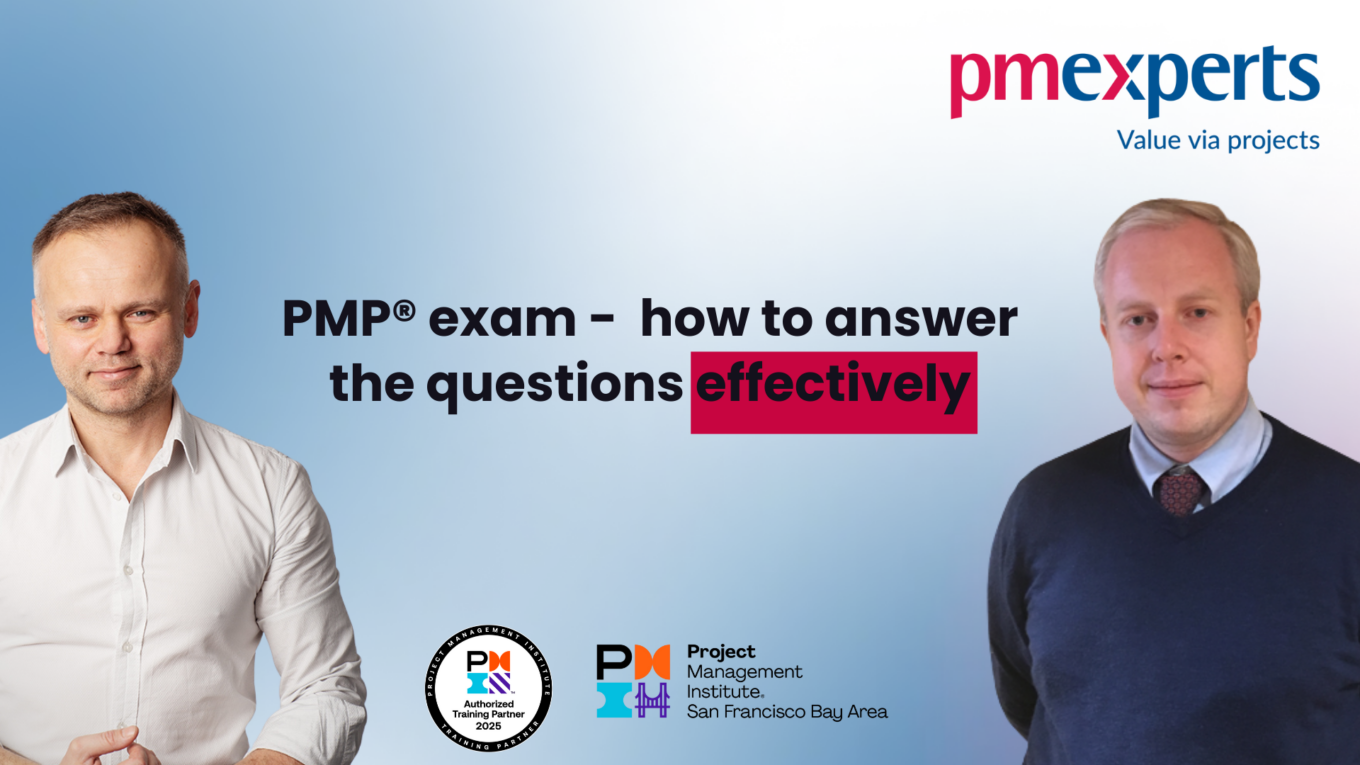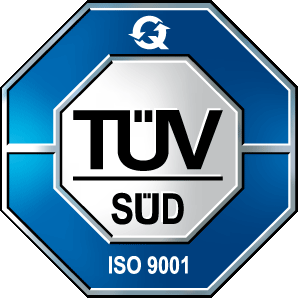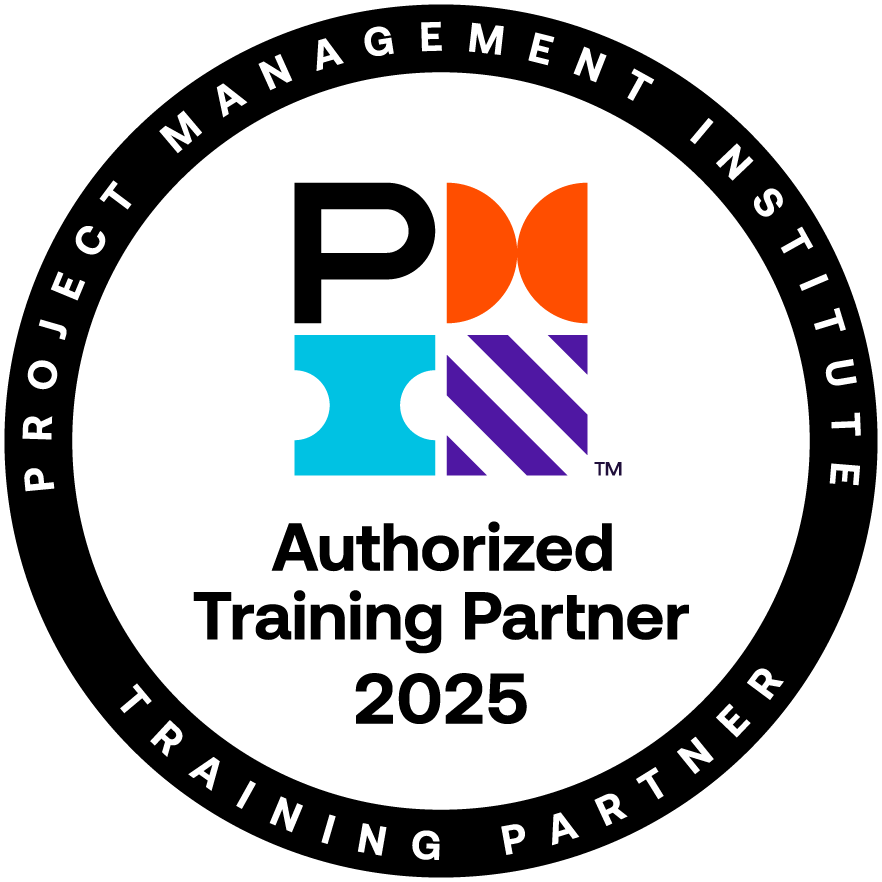When I first heard about the planned changes to the PMP® exam, I was convinced that they were mainly related to adapting the exam to the 6th edition of the “Guide to the canon of project management knowledge (PMBOK® Guide)”. I also assumed that the “Agile Practice Guide” supplement would become a mandatory part. I was also hoping for new types of questions, but apart from that, the topic didn’t arouse much emotion in me.
However, when I started to explore the reasons for the changes introduced and their scope, the case became truly fascinating, and even dangerous (especially for people who plan to take the exam).
The new formula of the PMP® exam is valid from the beginning of 2021 and is described in detail in the “PMP® Exam Outline” (Project Management Professional (PMP)® Examination Content Outline – January 2021) available on the PMI website.
To fully understand the scope of the changes introduced, as well as the expectations placed on professional project managers and how their knowledge and skills are assessed, you should carefully read the introduction to this document.
We read there that PMI conducted a global practice analysis (GPA) that revealed a number of trends in the project management profession that were not captured in the previous version of the PMP® exam. Changes were therefore necessary for the exam to reliably reflect the behavioral patterns of professional project managers.
As a result of the changes introduced, we can observe significant differences between the “Guide to the canon of project management knowledge (PMBOK® Guide)” and the new version of the “PMP® Exam Outline”.
What does this mean for people preparing for certification?
Scope of the PMP exam
The first and most important change is the scope of material that needs to be mastered.
Because the team preparing the PMP® Exam Outline was a team independent of the creators of the PMBOK® Guide, the view of the project management profession goes well beyond that contained in the “Guide to the Canon of Project Management Knowledge (PMBOK® Guide)”. Therefore, when preparing for the exam, we cannot limit ourselves to the knowledge contained only in the PMBOK® Guide. “Agile Practice Guide” – an addition to PMBOK® has become an equal source of knowledge, however, although it significantly expands it, it does not exhaust it. The items indicated by PMI as sources of knowledge include:
“Project Management: A Systems Approach to Planning, Scheduling, and Controlling author: Harold Kerzner, publisher: Wiley;
“Effective Project Management: Traditional, Agile, Extreme, Hybrid author: Robert K. Wysocki, publisher: Wiley,
“Essential Scrum: A Practical Guide to the Most Popular Agile Process”, author: Kenneth S. Rubin, publisher: Addison-Wesley.
The full list of recommended items is provided below the text.
Design environments
As we read in the “PMP® Exam Outline”, in order to reliably prepare for the certification exam, PMI conducted a global practice analysis (GPA), which included both market research and job analysis (JTA). Research conducted as part of the above-mentioned analyzes confirmed that Today’s project management professionals run projects in a variety of environments and use different approaches. Therefore, in order for the new PMP® exam to reflect the situation described above, approximately half of the exam questions will concern the agile and hybrid approach to project management, and the other half will concern the predictive approach.
PMP exam structure – scope of questions
The exam outline was structured as follows:
Fields
Tasks
Enabling factors
Three areas have been defined in project management: People, Process, Business Environment. The list below shows the percentage of questions from each field.
- People – 42% questions
- Process – 50% questions
- Business environment – 8% questions
Within each field, “Tasks”, i.e. the basic responsibilities within the field, are defined. The number of tasks within individual fields is presented in the list below.
- People – 14 Tasks
- Process – 17 Tasks
- Business environment – 4 Tasks
E.g. Task 1 in Domain I is Conflict Management.
For each task, ‘Enablers’ were identified, i.e. examples showing the work involved in the task.
E.g. Enabling factors for the “Conflict Management” task are:
- Understanding the source of the conflict and determining the stage at which it is located,
- Conflict context analysis,
- Assessing, proposing or agreeing on an appropriate way to resolve the conflict.
Attention!
Each set of exam questions includes all “Tasks” for each “Domain”.
Types of questions – PMP certification
Everyone who was preparing for the PMP® exam had to solve hundreds of sample questions, and all of them were constructed in the same way, i.e. choosing one correct answer out of four possible ones. I think that for many people it was not only tiring, but also monotonous. The same thing happened with the exam itself, although there was still some stress there. Nowadays, the exam is much more varied and therefore less boring.
So we have questions like:
- Choosing one correct answer,
- Truth false,
- Several correct answers,
- Filling in the gaps,
- Matching terms from two sets,
- Interactive work with charts and data.
This change will undoubtedly make both preparing for and taking the exam less monotonous.
Time and course of the PMP exam
The PMP® exam consists of 180 questions and lasts 230 minutes. In the entire pool, 5 questions are test questions, i.e. not included in the exam result (of course, the examinee does not know which of them are test questions). There is a 10-minute break after every 60 questions, so there are a total of 2 breaks during the exam.
Attention!
After the break, you cannot go back to the questions you answered before the break.
So how can we evaluate the changes that have been introduced to the PMP® exam?
They are profound, because PMI’s ambition is to maintain the very high prestige of the PMP® certificate and undoubtedly someone who passes this exam has above-average knowledge and the ability to use it in practice.
List of items to read:
Agile Practice Guide, author: Project Management Institute, ed. Project Management Institute
A Guide to the Project Management Body of Knowledge (PMBOK® Guide) – 6th Edition, author: Project Management Institute, ed. Project Management Institute
Project Management: A Systems Approach to Planning, Scheduling, and Controlling, author: Harold Kerzner, ed. Wiley
Effective Project Management: Traditional, Agile, Extreme, Hybrid, author: Robert K. Wysocki, ed. Wiley
Fundamentals of Technology Project Management, 2n/a Edition, by Colleen Garton with Erika McCulloch, ed. MC Press
Project Managers Portable Handbook, 3rd Edition, author: David Cleland and Lewis Ireland, eds. McGraw-Hill
Information Technology Project Management, 7th Edition, author: Kathy Schwalbe, ed. Cengage Learning
Essential Scrum: A Practical Guide to the Most Popular Agile Process, author: Kenneth S. Rubin, ed. Addison-Wesley
Project Management: The Managerial Process, author: Erik Larson, ed. McGraw-Hill
The Project Management Tool Kit: 100 Tips and Techniques for Getting the Job Done Right, author: Tom Kendrick, ed. AMACOM
Author of the article: Arkadiusz Urbański










